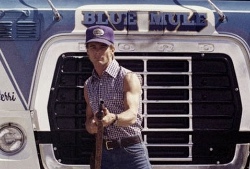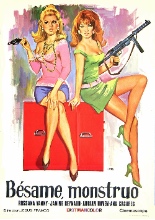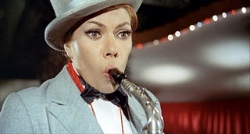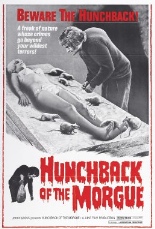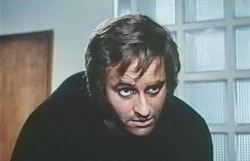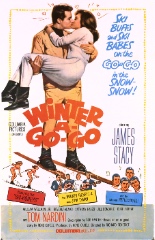
 Virtually the Ski Patrol of its day, Winter a-Go-Go marks an attempt by a major studio to muscle in on a minor’s success — namely, the cash cow that AIP was milking and milking among the collective teats of the youth market with its blanket of Beach Party romps. But leave it to the Columbia suits to not quite comprehend the simplicity of the can’t-miss formula; ignoring AIP’s surefire Frankie-and-Annette dynamic, Winter a-Go-Go opts for Frankie and, well, Frankie.
Virtually the Ski Patrol of its day, Winter a-Go-Go marks an attempt by a major studio to muscle in on a minor’s success — namely, the cash cow that AIP was milking and milking among the collective teats of the youth market with its blanket of Beach Party romps. But leave it to the Columbia suits to not quite comprehend the simplicity of the can’t-miss formula; ignoring AIP’s surefire Frankie-and-Annette dynamic, Winter a-Go-Go opts for Frankie and, well, Frankie.
Jeff (William Wellman Jr., High School Confidential!) has just inherited the ramshackle Snow Mountain Lodge in Heavenly Valley, and his horny best bud, Danny (James Stacy, Double Exposure), possesses the entrepreneurial skills to help launch it, starting with recruiting female employees solely off qualifications of the 36-21-36 kind — a scene so lecherous, it’s practically a preamble to the TV series Mad Men. (Would you expect less of a comedy whose opening credits follow a bikini-clad skier down the slopes?) They arrive to find the lodge under layers of dust and disrepair — one stop more inviting than The Overlook Hotel, and nothing a quick, coed cleaning musical number can’t fix!
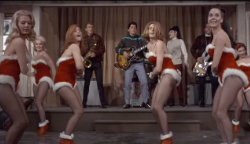 With segregated rooms (by gender, so save your outrage until the end of this paragraph, SJWs) and a bar serving nothing harder than Coca-Cola, Snow Mountain 2.0 is open for business! That business would be monkey business, if this movie had been made 20 years later. Since it wasn’t, T&A is absent, leaving director Richard Benedict (Impasse) to make do with a double-slipper pedestal bathtub’s worth of soapy subplots, ranging from Jeff being unable to pay rent to Jeff being clueless that his adorable, dream-girl secretary (Beverly Adams, Torture Garden) is all a-goo-goo over him. There are even some that don’t involve Jeff, like Danny stealing a stereotypical Chinese chef (H.T. Tsiang, 1966’s The Swinger) from a competing hotel — okay, now you can be outraged!
With segregated rooms (by gender, so save your outrage until the end of this paragraph, SJWs) and a bar serving nothing harder than Coca-Cola, Snow Mountain 2.0 is open for business! That business would be monkey business, if this movie had been made 20 years later. Since it wasn’t, T&A is absent, leaving director Richard Benedict (Impasse) to make do with a double-slipper pedestal bathtub’s worth of soapy subplots, ranging from Jeff being unable to pay rent to Jeff being clueless that his adorable, dream-girl secretary (Beverly Adams, Torture Garden) is all a-goo-goo over him. There are even some that don’t involve Jeff, like Danny stealing a stereotypical Chinese chef (H.T. Tsiang, 1966’s The Swinger) from a competing hotel — okay, now you can be outraged!
Audiences unaccustomed to this style of teenpic may be caught off-guard by any number of elements in need of carbon dating, from the pajamaed characters’ spontaneous group decision to rush downstairs to do the “Hip Square Dance” in the middle of the night, to now-antiquated lingo, such as one young man’s compliment that the spiffed-up Snow Mountain Lodge “is a gassy place!” And if today’s viewers can’t get past such instances, Winter a-Go-Go’s charms will be lost on them. AIP could have churned out this kind of thing in its sleep — and had, just half a year earlier with Ski Party, the fifth Beach Party sequel. While Winter is the lesser of the two, plenty of room for both exists in your heart … as long as you don’t Google whatever became of Stacy. —Rod Lott

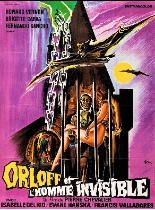
 That
That 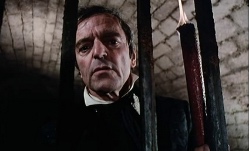
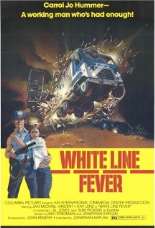
 Apologies to Jonathan Kaplan’s
Apologies to Jonathan Kaplan’s 